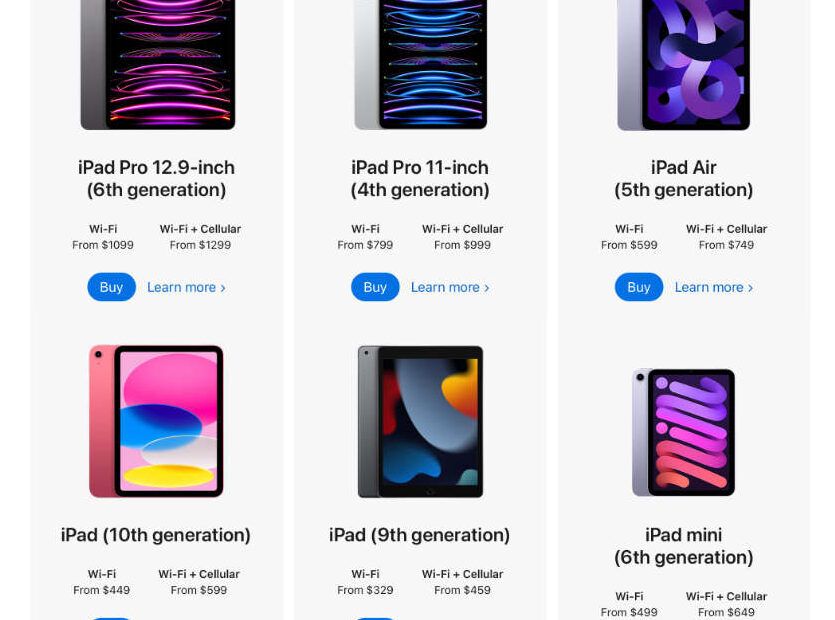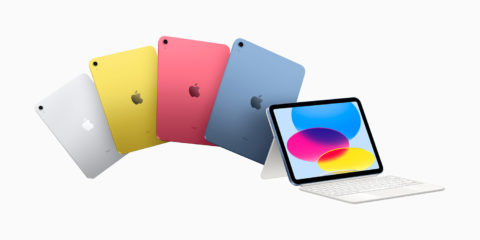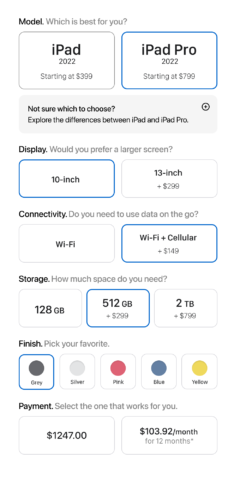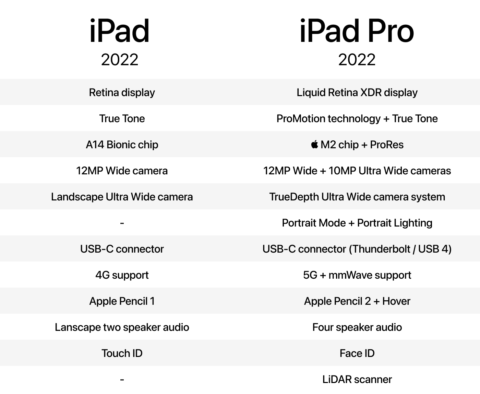Editor Tom Rolfe offers his unsolicited solution to Apple’s iPad problems
Buying a new iPad? Don’t worry, the choice is simple: there’s iPad (9th-generation), iPad (10th-generation), iPad Air (5th-generation), iPad mini (6th-generation), 11-inch iPad Pro (4th-generation), and – finally — 12.9-inch iPad Pro (6th-generation).
Ok, maybe not that simple then…
All six of those models are currently for sale, and Apple treats them as distinct devices despite a lot of crossover. Each has a separate sales page with myriad more customizations, all of which vary by model and generation. For anyone not plugged into an endless conveyor belt of tech news, it’s a pretty confusing lineup. How is a regular Joe supposed to know which iPad best suits their needs?
The recently-released 10th-gen iPad took an already-fractured lineup and squeezed itself into the cracks. Considered in a vacuum, it’s a great device, but those on a budget will opt for the much cheaper 9th-gen model, while those who want a bit more oomph without blowing the bank already have iPad Air. (Which, by the way, is no longer noticeably thinner or lighter than the other models, making the Air moniker kinda meaningless.)
All this adds up to a problem for Apple, a company that usually prides itself on ease-of-use, simplicity, and good marketing. I’d argue the iPad lineup ticks none of those boxes.
Listen up Apple, because I’ve come up with a solution: simplify the lineup enough to offer a single sales page for iPad, replacing the six currently in use on apple.com.
Here’s a mockup of how that could look, along with some minor pricing changes. Below is more detail on how to achieve it; an open suggestion to Tim Cook on how to fix this mess. You’re welcome.
First up, Tim, you don’t need six models. Two is plenty: iPad and iPad Pro. Unify the mini, 9th- and 10th-gen iPads into a single base model, and treat the two iPad Pros as a single model too. Forget iPad Air. It’s gone. You don’t need it.
As for names, let’s lose the generation stuff and go by release year, like you already do with Macs. Consumers shouldn’t be required to keep tabs on how many iterations of each model have come before, and the numbers are all over the place anyway. So we’re looking at iPad (2022) and iPad Pro (2022).
Let’s unify some other stuff while we’re at it. Both models will use an all-screen design, and both will be offered in two sizes. Let’s say 10-inch and 13-inch. No more 8.3-, 9.7-, 11-, or 12.9-inch displays that all require slightly different cases and keyboards. Make display size a customization rather than a whole other product category.
(If demand for a smaller iPad is still there, the baseline model could offer an 8-inch variant to replace iPad mini. But I’m not happy about it.)
Next, and this is perhaps the most controversial part, you should bring parity to the models by offering matching customizations. iPad and iPad Pro should offer the same base storage — I’d suggest 128GB — with the same (albeit fewer) upgrade options for both. That goes for colorways, too. If someone wants a pink iPad Pro or 2TB storage in the regular iPad, who are we to judge?
This means users will have just two big decisions to make: iPad or iPad Pro, 10-inch or 13-inch display. Sound familiar? That’s because Apple already does this with iPhone, and it works.
The goal here should be to remove the distinctions that don’t matter, pulling focus to the things that are different about the two models. iPad Pro still has a ton of features the regular iPad lacks, and customers will have an easier time understanding that — and adjusting each model to their exact needs.
Above is my view on how the feature comparison would stack up, based heavily on the existing models. iPad cuts costs with a cheaper display and no 5G, while iPad Pro pulls no punches. Do you really need three additional iterations between these extremes? No, you don’t.
I could go into more detail, but it’s the broad strokes that are important here. Simplify the lineup! Let’s make iPad iPad again.
Obviously in the real world, there are probably myriad reasons this exact setup couldn’t work. But for consumers — especially non-techy ones — I think this would be a perfect way to choose and purchase an iPad.




